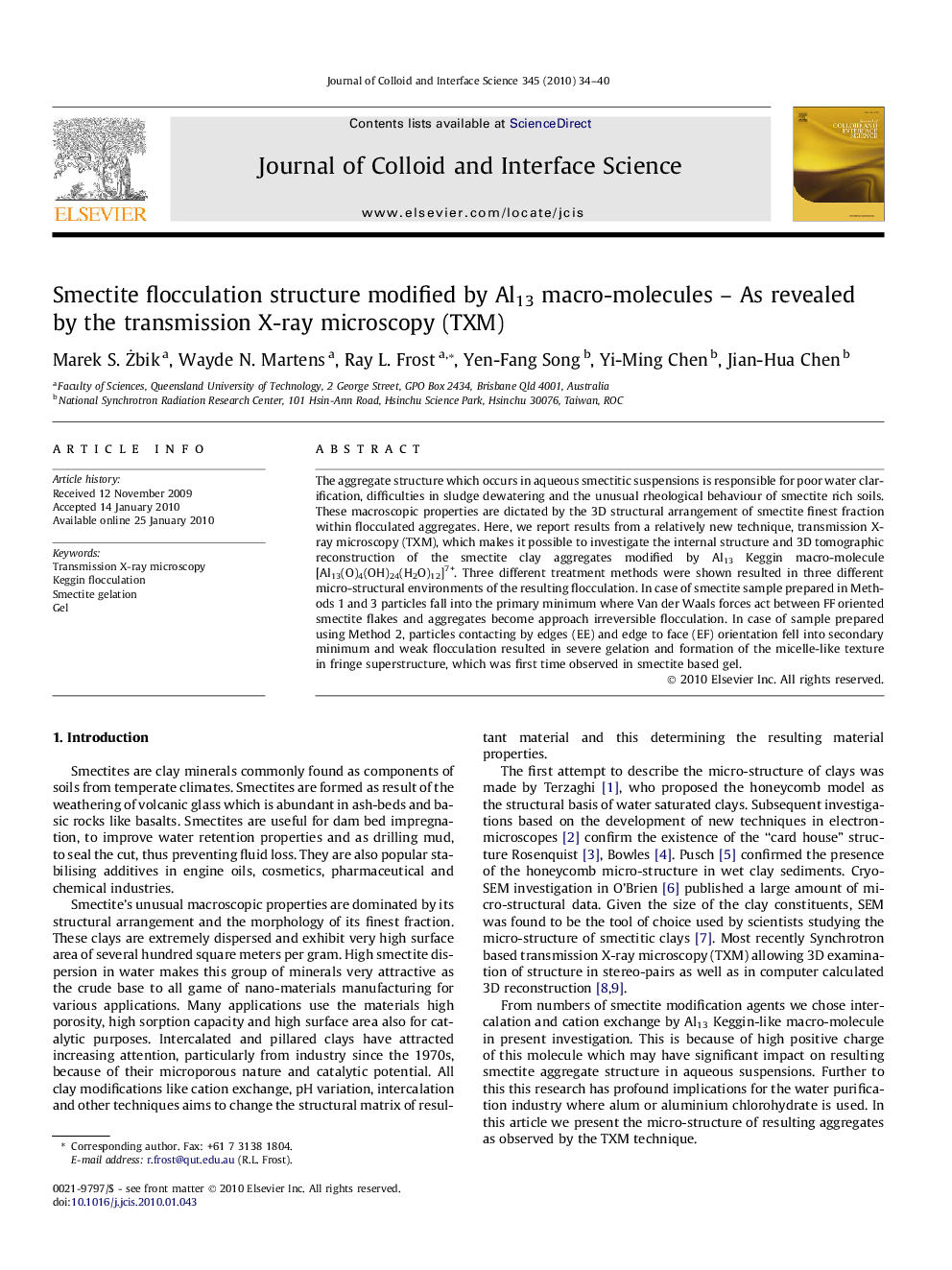| Article ID | Journal | Published Year | Pages | File Type |
|---|---|---|---|---|
| 610101 | Journal of Colloid and Interface Science | 2010 | 7 Pages |
The aggregate structure which occurs in aqueous smectitic suspensions is responsible for poor water clarification, difficulties in sludge dewatering and the unusual rheological behaviour of smectite rich soils. These macroscopic properties are dictated by the 3D structural arrangement of smectite finest fraction within flocculated aggregates. Here, we report results from a relatively new technique, transmission X-ray microscopy (TXM), which makes it possible to investigate the internal structure and 3D tomographic reconstruction of the smectite clay aggregates modified by Al13 Keggin macro-molecule [Al13(O)4(OH)24(H2O)12]7+. Three different treatment methods were shown resulted in three different micro-structural environments of the resulting flocculation. In case of smectite sample prepared in Methods 1 and 3 particles fall into the primary minimum where Van der Waals forces act between FF oriented smectite flakes and aggregates become approach irreversible flocculation. In case of sample prepared using Method 2, particles contacting by edges (EE) and edge to face (EF) orientation fell into secondary minimum and weak flocculation resulted in severe gelation and formation of the micelle-like texture in fringe superstructure, which was first time observed in smectite based gel.
Graphical abstractTEM micrographs of Ca2+ smectite flakes shown significant roughness at the platelet surface 200 nm extended in the Na+ and ∼50 nm in Ca2+ exchangeable forms.Figure optionsDownload full-size imageDownload high-quality image (85 K)Download as PowerPoint slide
